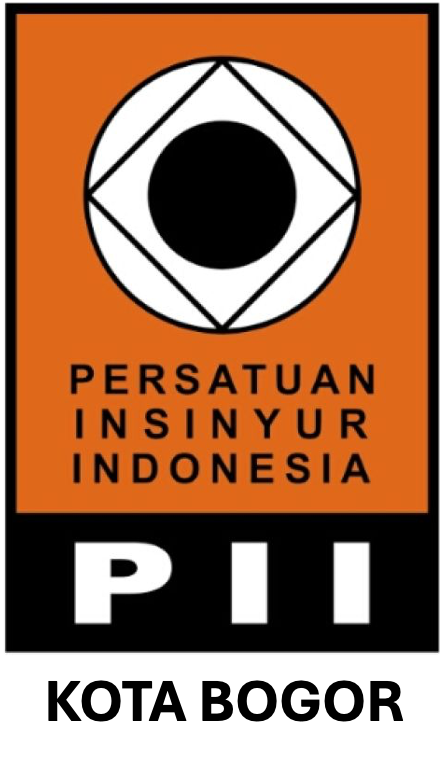Rancangan Sumur Resapan pada Bangunan Hunian Vertikal sebagai Implementasi kriteria Greenbuilding
Abstract
Land-use change due to development continues to increase so that it impacts decreasing infiltration area and increasing surface water runoff. One of the solutions to merahuce runoff is to apply green building concepts using infiltration wells. This study aims to design infiltration wells based on greenship new building 1.2 to merahuce the volume of rainwater runoff and STP runoff water that has met the quality standards at vertical residential buildings, as well as assessing the green building category of land use at design recognition stage. The results of planning rainwater absorption wells in accordance with the greenship new building version 1.2 showed that it is necessary to make circular infiltration wells with a diameter of 1,5 m and a depth of 5 m. It takes as many as 34 units with an effectiveness value of 99.1%. While the infiltration well for STP effluent water is required as many as 44 units with 100% effectiveness. The result of green building assessment in this apartment plan for appropiate site development category has reached 64% (11 out of 17 points)
Downloads
References
2. Haryono TJS. Dampak Urbanisasi Terhadap Masyarakat Di Daerah Asal. Masyarakat, Kebud dan Polit. 1999;12(4):67–78.
3. [BSN] Badan Standarisasi Nasional. SNI 03-2453-2002:Tata Cara Perencanaan Sumur Resapan Air Hujan Untuk Lahan Pekarangan. 2002.
4. Hilman. Analisis Dampak Lingkungan Jasmine Park Apartemen. PT Baruna Bangun Sentosa; 2017.
5. Raji P, Uma E, Shyla J. Rainfall-runoff analysis of a compacted area. Agric Eng Int CIGR J. 2011;13(1):1–7.
6. Suripin. Sistem Drainase Perkotaan yang Berkelanjutan. Yogyakarta: Andi; 2004.
7. Rachman RA, Suhardjono, Juwono PT. Studi Pengendalian Banjir di Kecamatan Kepanjen dengan Sumur Resapan. J Tek Pengair. 2014;5(1):79–90.
8. Rofiqoh R, Noerhayati E, Rachmawati A. Perencanaan Sumur Resapan Air Hujan Pada Perumahan The Araya Cluster Jasmine Valley Malang. J Rekayasa Sipil. 2019;18–25.
9. Noerbambang, S.N and Morinaga T. Perancangan dan Pemeliharaan Sistem Plambing. Jakarta: PT Prandya Paramita; 1996.
10. [BSN] Badan Standarisasi Nasional. SNI 6897-2008 :Tata Cara Perhitungan Harga Satuan Pekerjaan Dinding untuk Konstruksi Bangunan Gedung dan Perumahan. 2008.
11. [BSN] Badan Standarisasi Nasional. SNI 7394-2008: Tata Cara Perhitungan Harga Satuan Pekerjaan Beton untuk Konstruksi Bangunan Gedung dan Perumahan. 2008.
12. [BSN] Badan Standarisasi Nasional. SNI 03-7065-2005: Tata Cara Perencanaan Sistem Plambing. 2005.
13. Sosrodarsono S. Hidrologi untuk Pengairan. Jakarta: PT Pradya Paramita; 1987.
14. Arsyad S. Konservasi Tanah dan Air Tanah (edisi revisi). Bogor: IPB Press; 2010.
15. Bayuaji R. Studi Kuat Tekan Beton Porus sebagai Material Alternatif Batu Bata dengan Metode Taguchi. J Apl Tek Sipil. 2014;12(1):57.
16. Desmaliana E, Hazairin H, Herbudiman B, Lesmana R. Kajian Eksperimental Sifat Mekanik Beton Porous dengan Variasi Faktor Air Semen. J Tek Sipil. 2020;15(1):19–29.
17. Damayanti WD. Sumur Resapan Air Hujan Sebagai Salah Satau Usaha Pencegahan Terjadinya Limpasan Pada Perumahan Graha Sejahtera 7, Boyolali. e-Journal MATRIKS Tek SIPIL. 2019;1(1):189–200.
18. Isramaulana A. Rencana Anggaran Biaya untuk Sumur Resapan Masjid Besar Kota Banjarbaru. Info Tek. 2014;15(2):239–54.
19. Muliawati DN, Mardyanto MA. Perencanaan Penerapan Sistem Drainase Berwawasan Lingkungan (Eko-Drainase) Menggunakan Sumur Resapan Di Kawasan Rungkut. J Tek ITS. 2015;4(1):D16–20.
20. Nugraha A. Analisis dan desain bangunan resapan air hujan di sekitar jalan Meranti-Tanjung kampus IPB Dramaga, Bogor [Skripsi]. Institut Pertanian Bogor; 2014.
Copyright (c) 2024 Jurnal Teknik Sipil dan Lingkungan

This work is licensed under a Creative Commons Attribution-NonCommercial-NoDerivatives 4.0 International License.
Authors who publish with Jurnal Teknik Sipil dan Lingkungan, JSIL agree to the following terms:
a. Authors retain copyright and grant the journal right of first publication with the work simultaneously licensed under a Creative Commons Attribution License that allows others to share the work with an acknowledgment of the work's authorship and initial publication in this journal.
b. Authors are able to enter into separate, additional contractual arrangements for the non-exclusive distribution of the journal's published version of the work (e.g., post it to an institutional repository or publish it in a book), with an acknowledgment of its initial publication in this journal.
c. Authors are permitted and encouraged to post their work online (e.g., in institutional repositories or on their website) prior to and during the submission process, as it can lead to productive exchanges, as well as earlier and greater citation of published work (See The Effect of Open Access).











